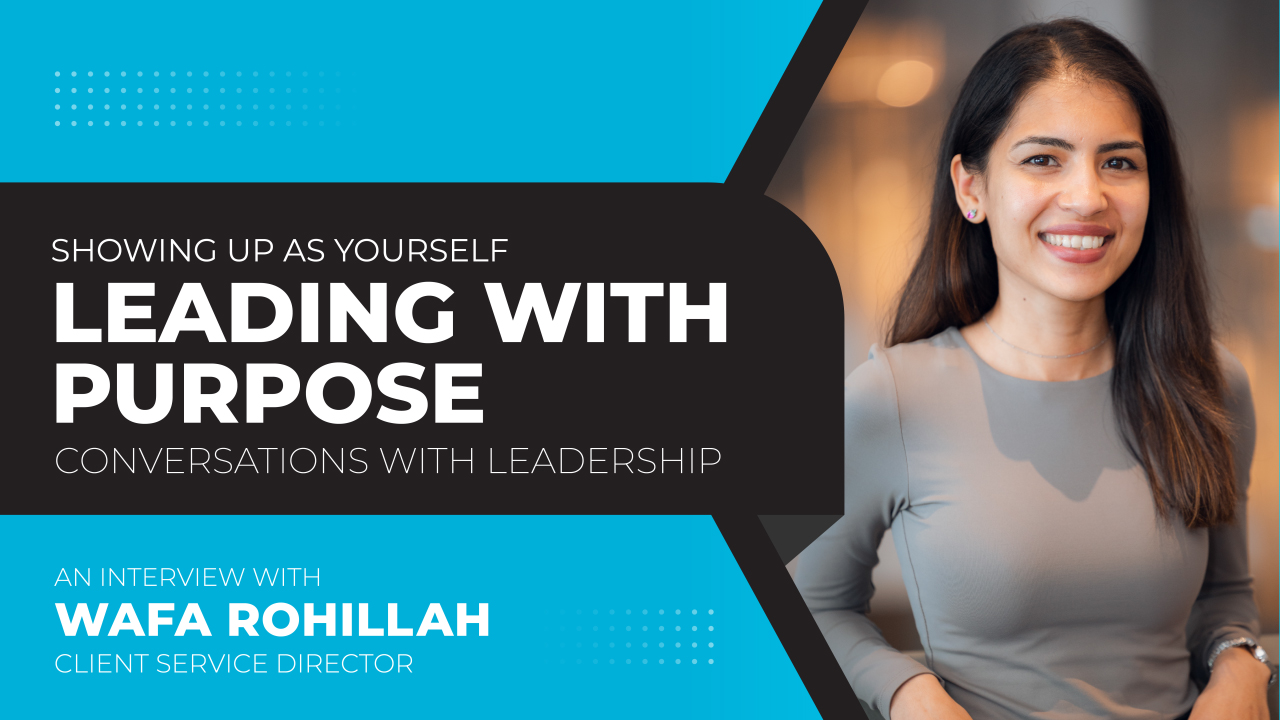Wafa Rohillah has been a pivotal leader at OSL since 2015, guiding complex projects and empowering cross-functional teams with a unique blend of strategic insight and empathy. In this article, she reflects on her leadership journey, challenges, and practical advice for women aspiring to grow in operations and client-focused roles. Wafa’s story highlights the importance of authentic leadership and fostering inclusive environments where everyone can thrive.
How do you see the role of Client Services evolving as OSL continues to grow?
As OSL takes on more complex programs, Client Services is becoming more strategic. We’re now involved from the start—helping shape the approach, aligning long-term goals, and bridging client needs with internal capabilities. It’s exciting to see our role evolve into one that connects, solves, and leads.
How do you ensure a seamless transition from strategy to execution in new business initiatives?
For me, it starts with setting things up right from the beginning and staying closely involved throughout. That means aligning early on what we’re trying to achieve, who’s responsible for what, and how success will be measured. I focus on both the big picture and day-to-day details to give the team direction and structure.
But strategy doesn’t stop at kickoff — I stay involved during execution, helping the team stay on track and pivot when needed. Regular check-ins (not just when issues come up) give us space to adjust and stay aligned with our goals. That ongoing involvement bridges the gap between planning and delivery, building confidence with both our internal teams and clients.
What’s been the most rewarding part of leading cross-functional teams at OSL?
Definitely seeing people grow. I’ve been at OSL for 10 years, leading everything from small projects to large ones, and one of the best parts is watching someone take on a challenge they’re unsure about — and then thrive. OSL moves fast, which creates constant opportunities for people to step up, stretch, and contribute in meaningful ways. It’s fulfilling to be part of someone’s growth story.
Was there a defining moment that helped shape your leadership style or approach?
Leading the SES transition was a real turning point for me. It was fast-paced, high-pressure, and involved many moving pieces. It pushed me to think bigger, lead with intention, and navigate ambiguity. What made the difference was having a mentor who believed in me, gave me space to lead, and supported me when needed. That experience taught me to stay calm under pressure, trust myself, and appreciate the power of having someone in your corner. It’s shaped how I lead today — creating an environment where others feel supported, challenged, and seen.
What role has your PMP certification and volunteer work with PMI played in your professional growth?
Getting my PMP gave me a language and framework for things I was already doing instinctively. It helped me bring structure and confidence to leading new programs with clarity. Volunteering with PMI has connected me with a community of professionals facing similar challenges but from different industries, which has broadened my approach to project management. It’s also a way for me to give back through learning and mentoring — something I truly value.
What advice would you offer to young women aspiring to step into leadership, especially in operations or client-focused roles?
My biggest advice is don’t wait until you feel ready — you probably are more ready than you think. Growth happens when you say yes to challenges that stretch you. Ask questions, even basic ones, and learn how different parts of the business connect. Build relationships not just upward, but across teams, because collaboration is key in operations. Also, find your mentors, allies, and peers who challenge and support you. Leadership isn’t a title — it’s a muscle you build by using it.
As a woman in senior leadership, what unique challenges have you faced and how do you navigate them?
I’ve often been hyper-aware of how I show up— wondering if I’m being too strong in one room, or not assertive enough in another. That push and pull is something I think a lot of women in leadership experience. Early on, I felt that pressure to read the room and fit into what was expected, but over time I realized the best way to lead is to be authentic and consistent—being direct when needed and warm when appropriate and always grounded in what’s right for the work we’re trying to do.
Being often the only woman or person of color in meetings was intimidating, but those moments taught me to trust my skills and show up as myself. Now, I focus on supporting and uplifting other women as well.”
You co-founded WE at OSL. What inspired the initiative and its impact?
I co-founded WE to create a safe space for women to share honest workplace experiences. It has grown into a supportive community that fosters connections and open conversations about women in leadership. Our mentorship programs have been especially impactful, helping women grow and navigate their careers.
Closing Thoughts
Wafa’s journey is a powerful example of intentional leadership—balancing strategic focus with empathy, and consistently creating space for others to grow. As OSL continues to evolve, her approach serves as a reminder that true leadership isn’t just about driving results, but also about building trust, fostering collaboration, and empowering people at every level.
